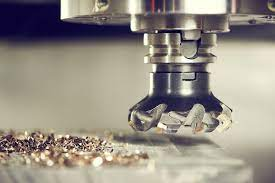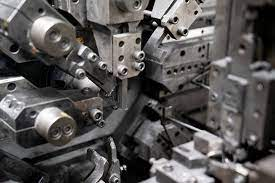
Tooling manufacture can be easy if we follow certain mold design rules. Moreover, it is to simplify and speed up the creation of a shaped product from rubber, metal, plastic, or other materials.
Mold making is a process that requires precision and a responsible approach to development.
We are an expert in tooling manufacture. We can always provide a complete and optimized form design. Our mold making service is:
- new product concept;
- design documentation;
- Design according to the wishes of the customer.
Tooling manufacture development: stages
- Development and approval of technical specifications.
- Moreover, checking the drawing for compliance with technological requirements.
- Technological work on the mold (metalworking, turning, boring and milling works).
- Similarly, design and installation.
- Testing (checking and sample approval).
In the process of manufacturing and design of molds, professional tooling manufacturers discuss with the client all questions and necessary improvements. We try our best to help our customer and make the mold perfect. Our experts will share with clients some secrets that will increase production efficiency.
The cost of creating a mold depends on:
- the need to develop a drawing or 3D model ;
- terms for creation;
- the complexity of the shaping surface;
- the size of the form.
MOLD DESIGN: CLASSIFICATION
There are a large number of products that we can create using molds, and no fewer mold designs for them.
Nevertheless, the classification of molds comes according to the type of pressing, the nature of operation, the number of products produced, the type of connector, and classes.
Pressing type
By the type of pressing, they are divided into:
- straight;
Generally, punch and die are the main components of molds. Furthermore, in the direct type of pressing, the die consists of a loading chamber. The punch compacts the heated press material loaded into the die.
In the injection type, the recess for the design of the product is close, and gating channels gain for the material supply. In addition, these molds are accurate and do not require flash cleaning. Therefore, they can be with a chamber for loading (for a press) and without it (for an injection molding machine). The latter is only used when molding thermoplastics.
The nature of tooling manufacture use
To heat the removable mold, the tooling manufacture press comes with additional heating elements. Moreover, they are good for small batch production. Semi-stationary ones come with a removable design part.
We connect the stationary to the plate of the press or injection molding machine. They are additionally go with special heating / cooling elements.
Additive Manufacturing with tooling
Additive manufacturing, according to conventional wisdom, is one of the paths to a new industrial revolution. Furthermore, 3D printing is changing the world around us. Moreover, it allows us to create a wide variety of products from car parts to airplanes and homes.
However, how does this innovative and still quite young technology work in comparison with the classic metal casting used for many centuries?
Traditional metal casting
The history of classic metal casting technology dates back to the middle Ages. This process includes several stages. First of all, you need to create a model of the final product. In the manufacture of the model, you can use a variety of materials, including wood.
In the design of the tooling manufacture model, it is necessary to provide a gating system and some additional supports. After that, a mold comes on the basis of the model. Therefore, for this purpose, you can use a variety of molding materials, the most popular of which is a sand mixture.
The first step is to prepare the tooling manufacture model
This process is easy to carry in different ways depending on the materials used. After creating a copy of the final product, it is necessary to design the gating system. Similarly, it is important to remember that the model should be free to come out of the sand mold, so its bottom should not be wider than the top.
Traditional tooling manufacture methods are common when dealing with bulky parts. However, if you are producing precision parts to order, it is better to opt for 3D printing.
What is solidification in tooling manufacturing?
When designing parts and gating systems, you should also take into account the fact that due to the high solidification rate of molten metal, it can solidify before it reaches the highest point of your product. To avoid this, it is necessary to provide for holes, which are subsequently separated from the part.
Then all this must accurately reflect in the casting mold. You need to prepare two sand molds. Next, the first shape creates from a special sand mixture, which exactly copies the object. The second mold is good for the gating system, into which the metal is comes into.
How does tooling procedure work in manufacturing?
If necessary, we can also use it to copy the second part of the product. After that, the molds come one above the other in such a way that the gating system matches the configuration of the object.
By connecting the two forms to each other and making sure that the metal does not flow through the two layers of sand mixture. Similarly, we heat and melt the metal. Since the metal hardens very quickly. In addition, tooling manufacture processes involve very rapid pouring of the metal into the mold through the gating system.
The last step is to remove sand from the product and separate the gating system. After that, you can subject the object to the necessary additional polishing or remove excess material, if necessary.
Selective laser melting
Selective Laser Melting (SLM) is an additive manufacturing technology that uses metal powder to create parts. A metal 3D printer distributes a thin layer of powder on the platform, after which the laser melts the metal, repeating the configuration of your 3D model.
A new layer of powder is applied and the procedure is repeated again. Since the metal melts at a high temperature, the printed parts take some time to cool down.
SLM technology allows multiple components to be integrated into a single object, resulting in cost savings and reduced assembly time for parts. The use of selective laser melting for the production of parts also allows for very strong products that can be thin-walled. Furthermore, tooling manufacture leads to a reduction in weight. In addition, such parts are resistant to high temperatures.
How to choose the right metal 3D printer material?
Can the parts be painted?
The construction of the parts printed on the polyamide material accepts finishing. Automotive paint can be applied leaving the finish according to the standard established by the project team. Therefore, it is a piece with characteristics of the final product. Therefore, if the customer is going to participate in an event and wants to show the product, he will have a finished piece ready for use.
Is it possible to print large parts in 3D?
Yes, because to print large parts that do not fit on a printer, it is necessary to make the divisions for good future tooling manufacture. With the aid of 3D software, cuts and assembly tab strategies are elaborated. All this to facilitate the assembly of the parts and the integration of the entire printed set.
After gluing, the dimensional control of the part is elaborated with 3D Scan technology to analyze the entire dimension, as well as to detail if any element of the product was out of position.
How to make a piece to print in 3D?
When it comes to additive manufacturing, you must always remember that the construction of the part will depend on a 3D file. There are specific softwares that model both parts and any other product to be developed.
In this way, these files are sent to the most diverse 3D printing machines. In the case of SLS we use the file with the extension .STL in which the printing of these parts is done. 3D files are very important for the construction of prototypes or parts, as they are decisive in the quality that 3D printing will have.
What I tooling manufacture equipment in 3D printing?
Tooling manufacture technological equipment is a series of devices necessary for more efficient operation of machine-building equipment. The use of tooling helps to improve the capabilities of technological operations performed by equipment of any kind.
It serves to expand the scope of the machine, which, as a result, gives a good growth in the company's income.
Technological equipment is responsible for high-quality installation and firm fixing of workpieces and parts relative to the working bodies of the machine, helps to move parts and perform assembly operations in the course of performing a particular task of the technological process.
May be:
- special
- universal adjustment
- universal
What does the use of good technological equipment affect?
The quality of the manufactured products, as a rule, directly depends on the quality of the tooling. Its use allows you to achieve good production results.
What are the main benefits of using tooling?
Reliability, simplicity and convenience - these are 3 words that can characterize the use of technological equipment in production. Thanks to its use, it becomes possible to quickly replicate and reduce the launch time and cost of new types of products.

It helps:
- Improve the quality of manufactured products
- Ensure reliability during part processing
- Increase productivity
- Ensure high quality produced
When buying this or that equipment, a competent entrepreneur always thinks about the further possibility of expanding its functionality. And the expansion of our own production, as you know, is impossible without the purchase of additional equipment.
Without it, any machine can perform only a limited set of operations, and produce, accordingly, a small assortment of products.
Final Words
We have mold making experience and flexible tooling manufacture processing technology. We are the best injection mold manufacturers in a variety of fields, including electrical equipment, automotive parts, industrial products, sporting goods, and consumer electronics.





